Looking for a solution that mitigates the limitations of voice calls and text chat? A video contact center is your answer.
Customer expectations are evolving, and traditional contact centers are struggling to keep pace. Video contact centers are stepping in to bridge the communication gap and connect you with your customers on a whole new level.
This article dives deep into video contact centers. We’ll explore what they are, key benefits and drawbacks, implementation tips, and top features to help you decide if video is your key to creating a more personalized and efficient customer experience.
What Is a Video Contact Center?
A video contact center incorporates video conferencing technology into the traditional call center model, enabling customers to contact your business via video call, much like they would through a regular phone call. This technology allows face-to-face interactions, visual demonstrations, and a more immersive customer support experience.
Think ease of a phone call combined with the richness of in-person interaction.
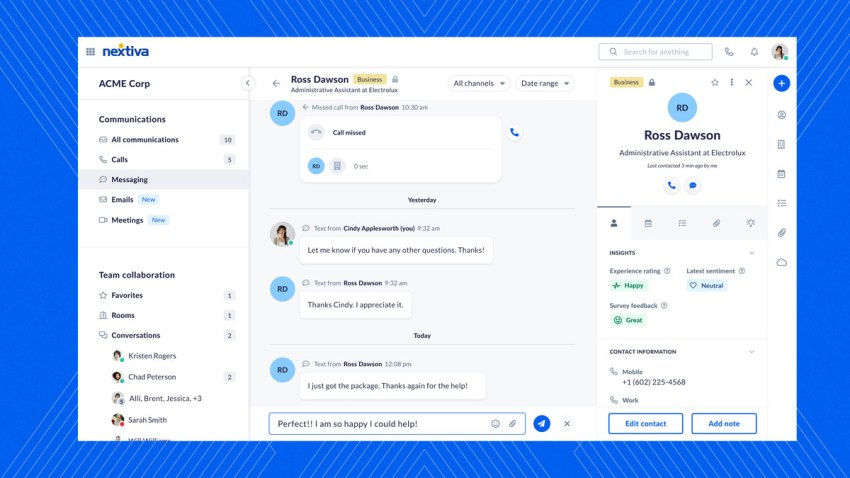
Take the example of a customer with a faulty product. Instead of struggling to explain the issue over the phone, they can simply show the problem through their webcam. This visual communication allows support agents to:
- Diagnose problems faster: Quickly understand the situation and provide targeted solutions.
- Offer personalized support: Get valuable insights via visual cues and nonverbal communication that lead to more effective interactions.
- Improve customer satisfaction: Make customers feel valued with faster resolutions and a more personal touch.
Customers place equal importance on a company’s service experience and its products, with 4 out of 5 stating that the quality of customer interaction is as crucial as the products or services themselves.
A video call center just doesn’t let you place a video call through a separate app, it seamlessly integrates with your existing platform, working alongside options like web chat and email, which enhances your customer support capabilities, driving a better experience.

“It takes less time to resolve a problem via video call than trying to describe resolution procedures over the phone, email, or chat. Video calls enable call center agents to swiftly identify and respond to customer difficulties.”
Matt Weidle
Pretty good, right? There are more pros too…
What Are the Benefits of a Video-Enabled Contact Center?
The benefits of implementing video in a contact center are both numerous and impactful. Incorporating video allows for a quicker resolution time, accurate troubleshooting, and a less frustrated customer, significantly reducing the risk of complaints later on.
The face-to-face interaction that video provides builds trust and reduces the necessity of in-person visits, reducing the risk of dispatching an incorrect engineer. These enhance the customer experience without negatively impacting your bottom line.
Video call centers excel in several key areas:
- Enhanced visual communication: Clearer understanding as both support personnel and customers can visually demonstrate and resolve issues.
- Real-time issue resolution: Immediate problem-solving as issues are shown and fixed in real time, preventing the escalation of problems.
- Personalized support: Customers receive a more tailored experience since support staff can see the issue firsthand, enabling a more accurate and personal response.
- Visual product demonstrations: Demonstrating product features or issues through video enhances comprehension and customer satisfaction.
- Improved agent productivity: Visual cues let agents diagnose technical problems quicker, explain complex concepts more effectively, and build customer trust. This translates into higher first-call resolution rates and increased sales opportunities that enhance agent productivity.
- Seamless omnichannel integration: Video capabilities integrate smoothly with other communication channels, providing a cohesive customer experience across platforms.

Challenges of Video Contact Centers
While video contact centers offer many benefits, it’s important to consider some challenges you may encounter:
User adoption and preferences
David Maldow, Founder of Let’s Do Video, is a little cautious over video in contact centers because of previous attempts.
Amazon tried using a “Mayday” button on its Kindle Fire tablet but it was often abused.
Focussing a little too much on accessibility, anyone with a tablet and an Amazon account could access video support without a reason to connect.
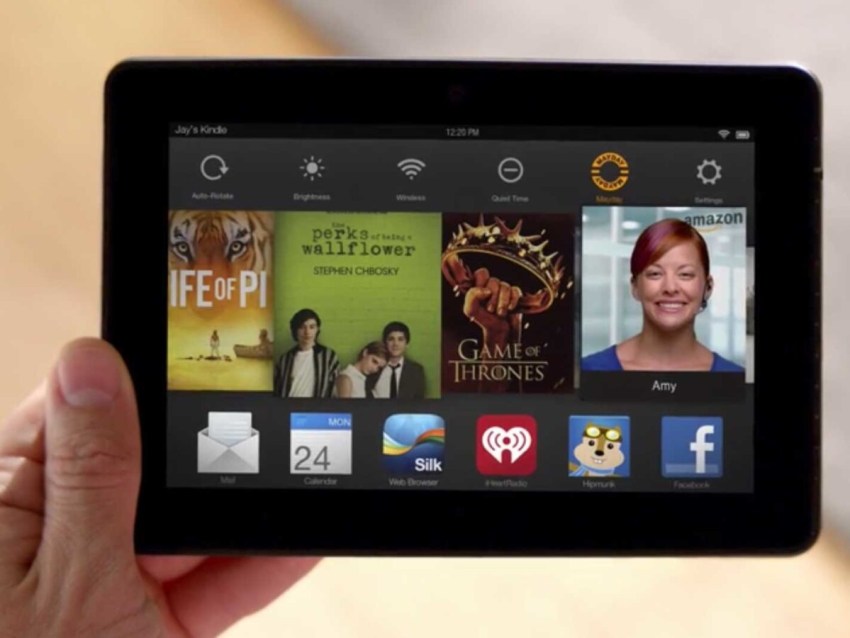
Video fatigue
Remember when we were all talking about Zoom fatigue during the pandemic?
When people work 9-5 (or longer now we’re at home and have no commute), the last thing we want to do is jump on another video call.
The hasty decision here is not to offer video at all. But what about all the people you could help with video?
A rational solution is to offer rather than require video as a channel in your contact center. For example, option 1 on your interactive voice response (IVR) system could be to speak to an agent and option 2 could be to video call an agent.
Technical restrictions
Outside of personal preference, you need to think about bandwidth. While a VoIP call only needs 100kbps, video demands higher bandwidth to process media.
Typically, you need at least 1MBps of bandwidth to run a video call without compromising the call quality.
Make sure you consult your IT team to free up enough resources before rolling out video in your contact center.
Video calls require significantly more bandwidth than traditional voice calls. Both the contact center and the customer need adequate internet speeds to ensure smooth, high-quality interactions.
Accessibility concerns
Harry Gallagher, CTO of Life Part 2 and former call center manager, points out that “Video can be more difficult to use than other channels, which can lead to customer frustration.” This is particularly relevant for demographics less comfortable with technology.
While video excels in certain scenarios, it may not suit all industries or customer interactions. It’s crucial to identify where video adds value and offer it as an option rather than a requirement.
To address these challenges, businesses should:
- Offer video as one of multiple contact options, not the sole channel.
- Ensure robust technical infrastructure to support high-quality video calls.
- Provide clear instructions and support for customers using video services.
- Carefully consider use cases where video truly enhances the customer experience.
Acknowledging and preparing for these potential drawbacks helps implement video contact centers more effectively, maximizing benefits while mitigating risks.
Use Cases for Video Contact Centers
The following use cases demonstrate how video contact centers spin up traditional customer service models, offering more engaging, efficient, and personalized interactions across industries.
- Customer service and technical support: Agents visually guide customers through complex issues, expediting problem-solving. Insurance companies streamline claims processing through visual assessments.
- Sales and retail: Car dealerships offer virtual test drives, while retailers provide personalized video shopping experiences, bridging the gap between online and in-store interactions.
- Healthcare: Telemedicine facilitates follow-up appointments and mental health consultations. Pharmacists offer video counseling to improve medication adherence and patient understanding.
- Education: Video enables personalized tutoring and immersive language learning with native speakers, expanding educational reach and effectiveness.
- Financial services: Banks and investment firms leverage video to explain complex products, conduct consultations, and foster stronger client relationships.
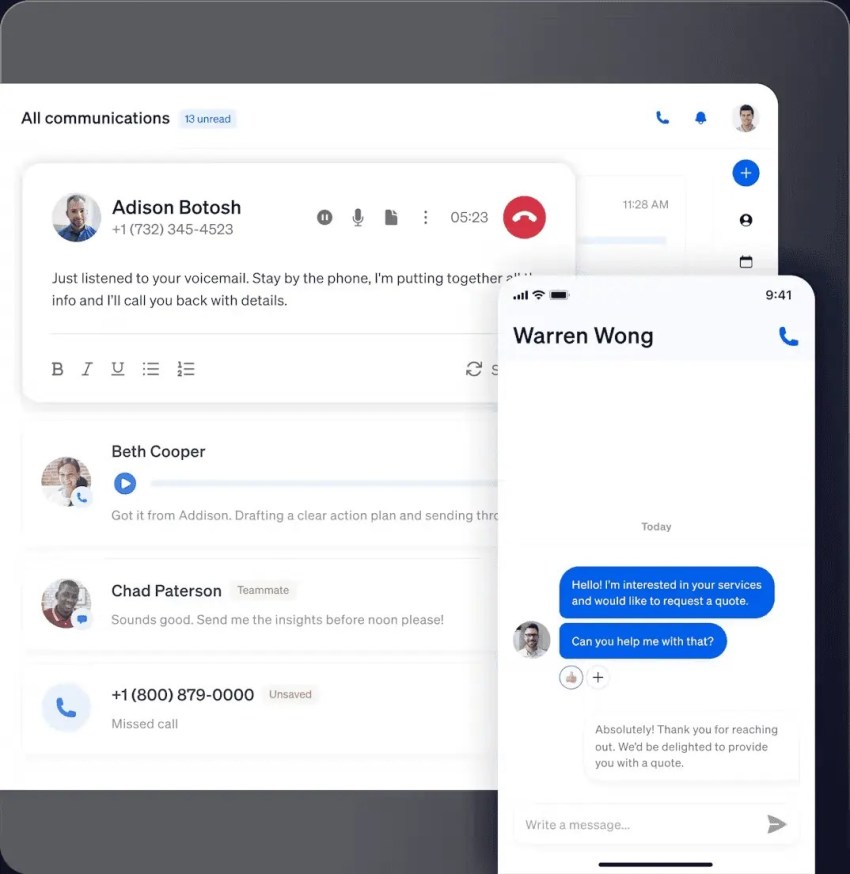
How To Implement a Video Contact Center
How do you successfully implement a video contact center to get the most out of it?
1. Plan & assess
Identify departments that would benefit most from video interactions and assess your customers’ technological readiness.
Choose contact center software that integrates seamlessly with your existing systems and offers essential features like screen sharing, call recording, and robust video capabilities. Consider scalability, ease of use, and vendor support when selecting your platform.
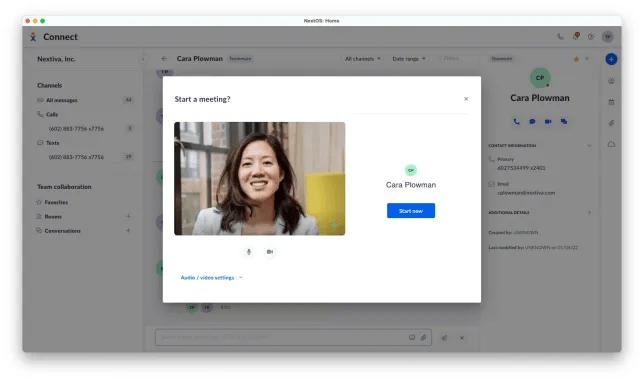
2. Train & prepare your team
Upgrade your network bandwidth and equip agents with quality cameras and microphones.
Train your team in video etiquette and effective on-screen communication. Cover both verbal and visual skills, including proper lighting, camera eye contact, and appropriate gesturing.
Conduct regular practice sessions to boost agents’ comfort with the technology and improve their virtual presence.
Teach agents to troubleshoot common technical issues and guide customers through joining video calls. Also, create a feedback system to continuously improve video chat performance based on customer and team member input.
3. Do a pilot run & educate customers
Before full implementation, conduct a small-scale pilot program to test your processes and gather feedback. This allows you to identify and address potential issues early on.
Once you’re confident in your setup, gradually expand the video service across your business. Educate customers about this new option, providing clear instructions and highlighting its benefits to encourage adoption.
4. Rollout & continuously improve
Establish video-specific metrics and key performance indicators (KPIs) like average handle time, first call resolution, and abandonment rates, and monitor them closely. Regularly refine your service based on the performance metrics and feedback from both agents and customers.
Above all, stay updated on emerging video meeting technologies to keep your contact center at the front.

Key Features To Look for in a Contact Center Solution
Choosing the right video contact center software that fits your team and customers is a top priority when implementing video in your processes. Let’s look at the feature set to keep an eye out for.
- Intuitive interface: User-friendly designs ensure smooth adoption for both agents and customers.
- Live video messaging: Video chat options enable real-time, face-to-face interactions, streamlining digital and in-person support.
- IVR integration: Advanced interactive voice response systems now incorporate video options, allowing customers to choose their preferred communication method.
- Self-service enhancement: Video tutorials and visual guides help customers resolve issues independently.
- Workflow optimization: Streamlines support processes, reducing resolution times and improving efficiency.
- Actionable insights: Call analytics provide valuable data on customer behavior and agent performance, facilitating continuous improvement.
- API capabilities: Allow for seamless integration with CRM and other business systems.
- Automation: Incorporates intelligent routing and other automated processes to enhance operational efficiency.
- Customization: Tailored solutions to meet specific business needs and branding requirements.
- Multi-touchpoint integration: Extends video capabilities across various stages of the customer journey.
- Webinar functionality: Supports group sessions for customer education and product demonstrations.
- Closed captioning & screen reader compatibility: Guide customers with hearing or visual impairments and accommodate diverse user needs.
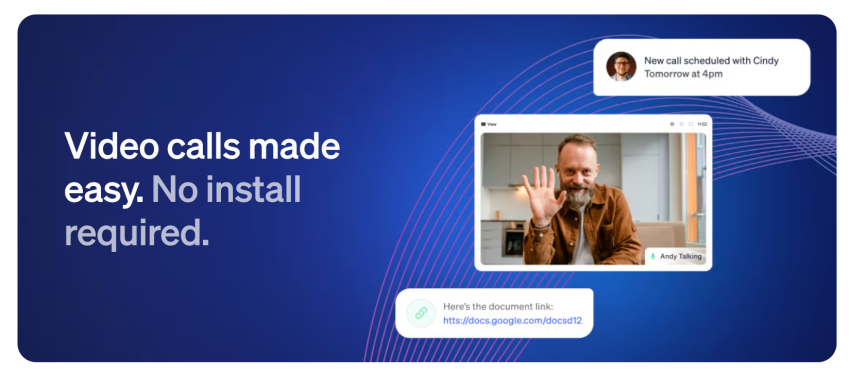
Should You Implement Video in Your Contact Center?
Patrick Watson, Senior Analyst at Cavell Group (a cloud communications research firm) points out that 36% of businesses use video as part of their customer contact toolset already. A further 29% plan to adopt video as a customer communication channel in the future.

“We expect video usage to increase as more organizations recognize the value it can add to customer interactions. Benefits include relationship building and more personalized experiences for customers.”
However, the decision to implement video should be based on your use case and industry needs. Watson notes that video is particularly effective in verticals where visual information enhances the interaction.
For example: When a visual adds to the interaction — like within retail for a more detailed product examination — video in the contact center is a good idea.
While video can significantly enhance customer interactions in most scenarios, it may not work for every customer engagement. Assess your goals, customer expectations, and the nature of your services to make the right choice.
Where Can I Get Video Call Center Software?
Nextiva Contact Center provides an omnichannel solution including video as a channel to serve your customers.
It works in tandem with other channels like voice, live chat, email, SMS, and social media, offering a consistent customer experience regardless of the channel they opt to reach out to you.
Besides an inbound option for video callers, you benefit from skills-based routing and a single interface. Customers receive the same experience as if they were calling you via phone. Just because they choose to call with video no longer means a compromised customer experience.
A single interface and a standard reporting suite mean agents and supervisors continue working in a place they know their way around.
Ready To Try Video in Your Contact Center?
The pros of video-enabled contact centers outweigh any deemed cons. Most of which you can manage by offering choice rather than enforcing video for every call.
For the small amount of potential negatives, like caller bandwidth, the bigger picture is that offering video as a channel can only be a good thing.
Whether you’re a support, sales, or bookings call center, think how much easier an agent’s life would be if they could see what they were troubleshooting.
Then think about how much happier customers will be when they can literally show you their problem.
Video in the contact center is a good idea.
The contact center solution teams love.
All conversations in one platform. Empowering agents. Satisfying customers.

















 Customer Experience
Customer Experience 










